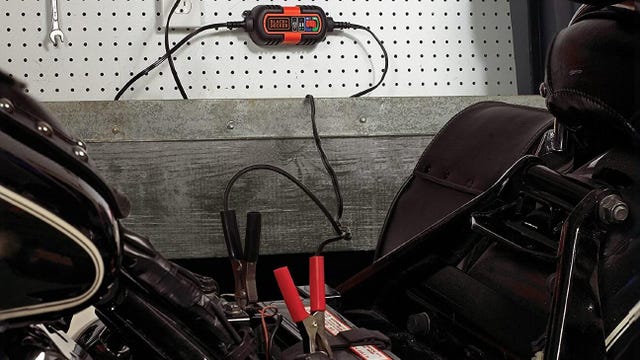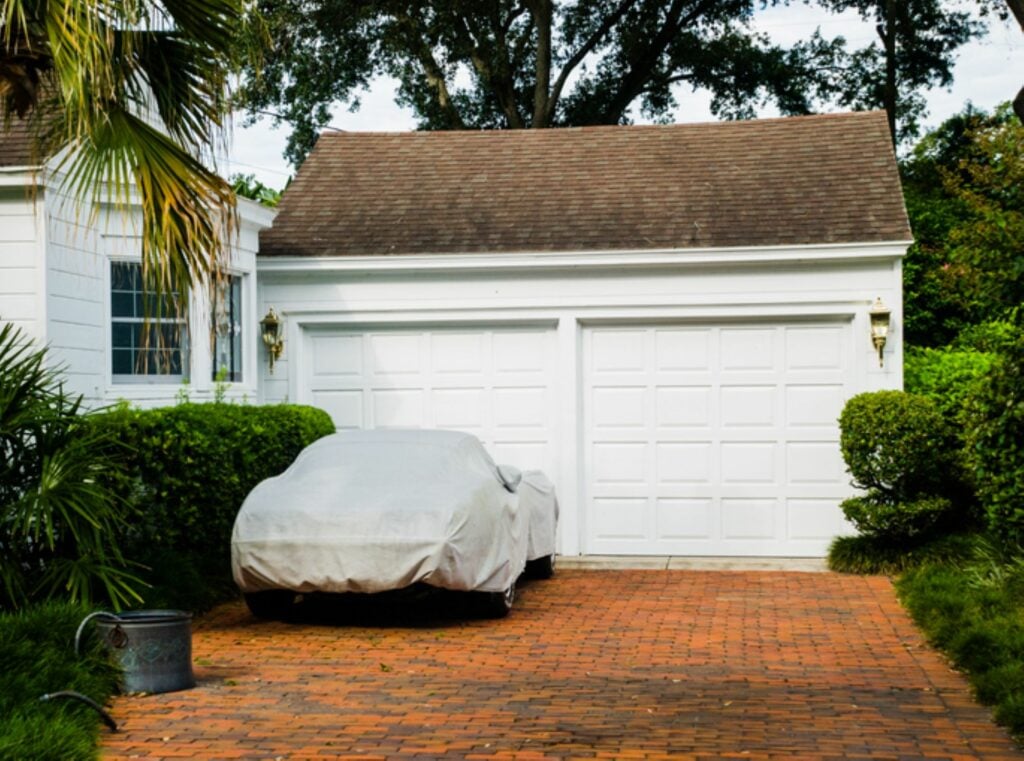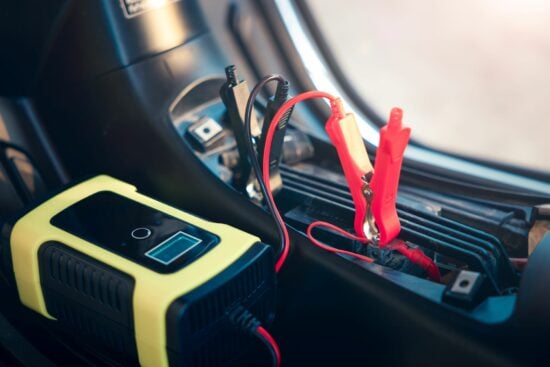Planning to keep your car parked in storage for an extended period? If so, maintaining your battery charge is crucial. While a car battery typically promises lifespans of 3 to 5 years, long spans of inactivity (say, storing your classic car in your garage for the winter), could compromise your vehicle’s battery.
When a car isn’t driven regularly, the battery loses its charge much faster — in anywhere between 6 weeks to 6 months. While the battery itself hasn’t “died” in the sense of reaching the end of its lifespan, it becomes unresponsive or “dead” due to the lack of charge.
Two popular tools you can use to maintain vehicle battery health are battery tenders and trickle chargers. Though they might appear similar at first glance, they serve two different purposes.
Battery Tender vs. Trickle Charger: Distinguishing Factors
Your choice between a battery tender and a trickle charger depends largely on your maintenance preference and the specific needs of your vehicle during its storage period.
- Battery tenders are best for vehicles stored for extended periods without any use. They keep the battery at an optimal charge, ensuring it doesn’t deplete due to natural self-discharge.
- Trickle chargers are preferable when the vehicle will be used occasionally during its storage period. They continuously offer a low charge to the battery, countering the slow drain over time.
Other important differences between the two devices are how/when they activate and how often you need to check them.
Activation Mechanisms
A battery tender activates when battery voltage drops, then can automatically switch to maintenance mode when fully charged.
Meanwhile, a trickle charger provides a continuous charge, and some models have the ability to auto-regulate to prevent overcharging.
While battery tenders are generally automated, trickle chargers can vary. Some basic trickle chargers are manual and require oversight, while smart trickle chargers can automatically regulate the charge.
User Interaction
Both devices are simple to use. But once you hook up a battery tender, the rest is a hands-off, automated process.
On the other hand, some trickle chargers require periodic checks, at least for basic models. Advanced trickle chargers can be automated.
How Does a Battery Tender Work?

Image Source (Ready to buy? Visit Battery Tender’s official site)
When the battery’s voltage drops below a set level, indicating it’s not fully charged, the battery tender automatically activates. The specific voltage that prompts a battery tender to activate can depend on the design of the tender and the type of battery it’s meant for.
For most 12V lead-acid car batteries, which are the most common type, they’re considered “fully charged” at around 12.6 to 12.7 volts and “discharged” at 11.8 to 12.0 volts.
You only need to connect the battery tender’s clamps to the battery terminals to install the device. Once the battery reaches its full charge, the battery tender will switch to maintenance or float mode to prevent overcharging. This automated process ensures that even during a long period of inactivity, your car’s battery remains in peak condition.
How Do Trickle Chargers Work?

Image source (Ready to buy? Order it from Amazon!)
A trickle charging device requires attachment to the battery’s terminals and plugging it into a standard household outlet. While basic versions require intermittent monitoring to avoid overcharging, smart trickle chargers possess auto-regulating features, stopping the charge once the battery is full.
Always abide by the manufacturer’s instructions for safe use.
Check Your Battery Charger
While the condition of your car battery is a prime concern, you’ll also want to be mindful of the condition of the battery charging device itself.
Here’s why it’s essential to periodically inspect your charging device.
Safety
Battery chargers, like any electronic equipment, can experience wear and tear. Damaged cables, corroded connectors, or malfunctioning indicators can pose a safety risk, leading to potential electrical hazards or ineffective charging.
Efficiency
A battery charger in optimal condition ensures that the battery receives a consistent charge, reducing the chances of overcharging or undercharging, which can shorten battery life.
Technological Updates
As technology progresses, newer models of chargers often come with added features and safeguards. Periodically checking and possibly updating your charger ensures you benefit from these advancements.
Regularly inspecting your battery chargers can save you money in the long run. Replacing a car battery can cost anywhere from $60 to $300 or more. Labor cost can add another $50 to $100..
Maintaining Your Car Battery and Car Battery Charger
Both the car battery and the devices used to charge them, such as battery tenders and trickle chargers, require regular maintenance to ensure longevity and safety.
Car Battery Maintenance
When storing a car battery for an extended period of time, it’s best to keep it at room temperature. Extreme temperatures can negatively impact its performance and lifespan. A climate-controlled storage environment for them is advisable.
Additionally, be vigilant about the battery’s charge level, and charge the battery once its capacity falls below 20%.
It’s also crucial to regularly inspect terminals for corrosion and use a battery tester for accurate readings. Always ensure that the storage area is dry to prevent dampness from impacting the battery life. In addition, don’t store new car batteries with old ones. Mixing them can decrease their charge and overall battery life.
Battery Tender Maintenance
To maintain your battery tender, store it in environments above 32°F and ensure the clamps are securely connected to the battery terminals. Periodically monitor to prevent overcharging the battery.
Additionally, it’s recommended to occasionally utilize an equalizer charge, which helps rebalance the battery cells and counteract sulfation.
Trickle Charger Maintenance
The trickle charger should provide a steady, low-amperage charge. Some models also have a battery conditioner to address lead sulfate deposits.
It’s important to observe the charging process to ensure the battery isn’t overcharged or undercharged. Ensure there’s adequate ventilation when using a trickle charger to avoid overheating both the battery and the charger.
Battery Storage Tips
Always store batteries in a vapor-proof container to protect them from moisture and accidental contact with metal objects. Once your car battery nears the end of its lifespan, recycle it. Many automotive shops offer battery recycling programs.
Remember, consistent checks and adhering to manufacturer guidelines can extend the lifespan of both your device and your battery. Different brands or models might have unique maintenance requirements.
Final Thoughts
Both battery tenders and trickle chargers play crucial roles in maintaining battery health, especially during prolonged periods of inactivity. When you’re considering long-term storage, it’s vital to align your choice of charger with your needs, budget, and willingness to perform regular maintenance.
Given the importance of ensuring optimal battery health during storage, the environment in which you store your vehicle is equally critical. That’s why we recommend checking out a peer-to-peer storage marketplace such as Neighbor.
Neighbor car storage offers safe, affordable, and high-quality storage options located near you, ensuring your car, and its battery, remain in top-notch condition during extended periods of inactivity.

Frequently Asked Questions
Explain How to Use Battery Tenders
To utilize a battery tender, connect its clamps to the battery terminals and plug it into a standard household outlet. Once the device detects a drop in the battery’s voltage, it will automatically activate to provide a consistent charge.
Will a Trickle Charger Charge a Dead Battery?
Yes, a trickle charger can completely charge a dead battery, though it will take a long time. For dead batteries or ones that have been completely drained, a jump start might be necessary before any charging process can begin. Just remember that batteries have sulfuric acid, and charging induces a chemical process, so it’s crucial to connect alligator clips correctly and follow safety precautions.
Can You Use a Battery Tender on a Sealed Lead Acid Battery?
Yes, you can use a battery tender on a sealed lead acid battery. While some battery tenders are specifically designed for smaller batteries, many modern tenders can accommodate a range of battery sizes, including larger sealed lead-acid batteries.
Is a Battery Tender Bad for a Battery?
A battery tender, when used correctly, is designed to prolong the battery’s life and maintain its health, especially during long periods of inactivity. However, like all tools and devices, it’s important to use a battery tender properly to avoid potential issues.
For Prolonged Storage, Should I Disconnect My Battery or Use a Charger?
Disconnecting your battery, especially if your car is stored for extended periods of time, can prevent your battery from losing power and protect your car’s electronics. Otherwise, consider using a trickle charger or battery tender to keep the battery healthy.







